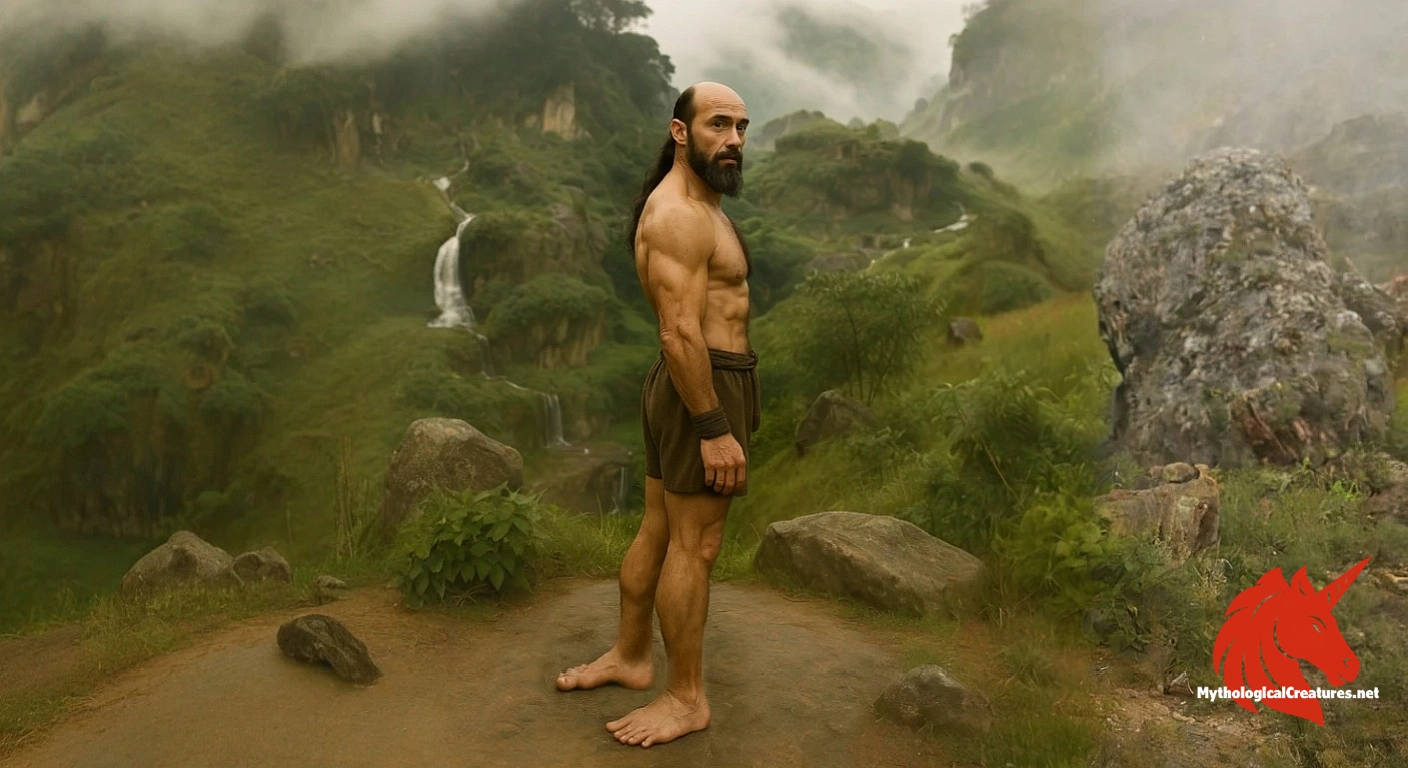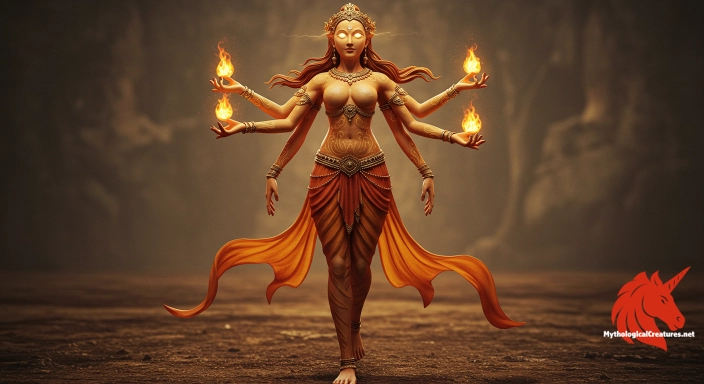Nuli: The Nuli are a legendary race of people mentioned in ancient Greek texts, noted for their backward-facing, eight-toed feet and residence on Mount Nulus in India.

Nuli
Nuli - They represent the ancient Greek fascination with exotic peoples and the mythologisation of distant lands.
Origins & First Encounters
The legend of the Nuli, also known as Nuloi or Nouloi, emerges as one of antiquity’s most intriguing myths, steeped in the exotic lore of distant lands. Their reputed home, Mount Nulus in India, is portrayed as a mystical realm where nature and myth converge in an atmosphere of wonder. Early accounts from Greek travellers and storytellers first attested to their existence, sparking imaginations with their unusual characteristics. They are most famously distinguished by their backward-facing, eight-toed feet—a detail that has captivated generations as a symbol of nature’s delightful eccentricities. Many narratives suggest that the Nuli bridged the gap between human rationality and the unknowable wild, embodying both the allure and peril of uncharted territories. Their origin story is interwoven with the themes of mystery and otherness, reflecting an era when the boundaries of civilisation were marked by fantastical creatures. Over time, their myth has not only served to delineate the known from the unknown but has also provided a canvas for allegorical interpretations about humanity's encounter with the exotic. With each retelling, the Nuli have maintained an allure that is as much about the beauty of difference as it is about the fear of the unfamiliar.
Their saga is a testament to the human desire to chart the mysterious corners of the world, making them a memorable emblem of mythic diversity and cultural curiosity.
Source Texts & Tale Variants
Ancient texts from the classical world occasionally mention the Nuli, placing them among the many legendary races that populated both real and imaginary geographies. Early Greek travellers, documenting their encounters on the fringes of the known world, provided one of the earliest glimpses into this fascinating myth. Diverse manuscripts from antiquity reference them under slightly varying appellations, underscoring how folklore adapts with shifting cultural narratives. Some medieval compendiums expanded their tales, imbuing these accounts with layers of allegorical meaning that went far beyond a simple description of physical anomaly. The recurrent detail of backward-facing, eight-toed feet suggests that early storytellers focused on a symbolic inversion of natural order. In variant traditions, the Nuli appear in episodes that are as much moral lessons as they are exotic travel notes, emphasising caution and wonder in equal measure. Folkloric sources across different eras have occasionally intertwined their narrative with that of other legendary peoples, highlighting a broader fascination with the unknown. As a result, even though the surviving primary sources are fragmentary, the diversity of story variants attests to a recurring cultural impulse to interpret the unfamiliar through mythic imagery.
These layered sources continue to invite modern curiosity, offering glimpses into ancient perspectives on human difference and environmental mystery.
Form & Powers
The Nuli are remarkably defined by their most singular feature: backward-facing feet with eight toes on each foot, a characteristic that defies conventional human anatomy. This unusual physical attribute has been depicted in a variety of ancient and later illustrations, each instance adding nuance to their mystique. Their overall bodily form is described as essentially human yet subtly altered, suggesting an evolutionary departure that is both fascinating and enigmatic. The inverted orientation of their toes is portrayed as an adaptation that might serve an unknown purpose, perhaps even a symbolic one, challenging natural order itself. Descriptions of their skin range from earthy tones to hints of bronze and blue, inviting interpretations that tie them closely to the rugged, elemental surroundings of Mount Nulus. Their eyes, often noted for a penetrating, otherworldly glimmer, add to the impression of a people at once wise and detached from ordinary human concerns. Every meticulous detail—from the balance in their gait to the peculiar alignment of their digits—serves to reinforce their status as beings who exist on the fringe of human experience. These physical peculiarities have, over the centuries, inspired both scholarly debate and artistic reinterpretation, ensuring that the image of the Nuli endures as a memorable symbol of mythic abnormality.
The careful chronicling of their form has made the Nuli a touchstone for exploring how physical anomalies can be steeped in layers of cultural meaning, representing both a deviation from and a celebration of the natural order.
Regional Faces
While the traditional lore places the Nuli on Mount Nulus in India, regional adaptations have richly diversified their narrative across cultural boundaries. In various parts of the Indian subcontinent, they are sometimes reimagined as enigmatic sages or even divine intermediaries, whose unusual traits signify an otherworldly wisdom. Middle Eastern storytellers have woven them into myths of mystical guardianship, linking their bizarre physical features with supernatural protection over desert and mountain frontiers. Central Asian renditions often portray the Nuli as elusive shamans deeply attuned to nature, blending elements of mysticism with an almost fabled natural resilience. European medieval texts, meanwhile, catalogue them among the many exotic peoples that dotted the margins of an ever-expanding map of the world, frequently as emblems of the uncivilised wilderness. The inversion of their anatomy is variously interpreted: in some traditions it is seen as a protective charm, while in others it symbolises an inherent link to the mysterious forces of nature. Local artistic depictions tend to vary, with some emphasising a more graceful aesthetic and others highlighting the strangeness of their feet to evoke a sense of eerie otherness. As these stories traversed geographical and cultural frontiers, each society imbued the Nuli myth with traits that resonated with their own fears, hopes, and spiritual paradigms.
This regional multiplicity not only enriches the myth but also demonstrates the universal appeal of stories that capture the essence of the unknown.
Cultural Parallels
The Nuli occupy a fascinating position within the vast tapestry of mythological beings, drawing compelling parallels with other legendary races from diverse cultural traditions. Their signature trait of backward-facing feet is unique, yet it resonates with the broader mythic tradition where physical anomalies serve as metaphors for the mysterious or the divine. In early Greek and Byzantine literature, figures such as the Cynocephali—beings noted for their distinctive non-human traits—offer an intriguing point of comparison. Similar to the wild men of European lore, the Nuli represent the liminal space between civilisation and the untamed wilderness, echoing the recurring theme of the otherworldly within human communities. The inversion of natural order, a central motif in the Nuli myth, finds a parallel in shamanistic traditions where physical eccentricities are seen as imprints of cosmic power. Eastern philosophies sometimes describe mountain spirits with altered physiological characteristics, inviting comparison with the Nuli’s mystical attributes. Such cross-cultural comparisons highlight that the narrative of unusual bodily features is not confined to one tradition but is a widespread metaphor for exploring the boundary between the mundane and the sacred. In effect, the Nuli serve as a bridge linking disparate mythologies, each of which uses physical difference to evoke the profound mysteries that lie beyond ordinary experience.
This comparative perspective underscores that while the details may differ, the underlying human impulse to mythologise physical and spiritual anomalies is remarkably consistent across civilizations.
Legacy & Modern Evolution
The evolution of the Nuli myth from antiquity to modern interpretations reflects a broader cultural shift in the understanding of the mysterious and the anomalous. In its early incarnations, the Nuli were chronicled in travel narratives that served as both records of far-off lands and allegories for civilization’s limits. Over time, as the world grew smaller and knowledge expanded, their story transformed from a testament to distant mystery into a symbol of the enduring allure of the uncharted and the uncanny. The Renaissance and Enlightenment periods saw the Nuli reinterpreted through the lens of allegory and metaphor, with their inverted features becoming a subtle commentary on the inversion of societal norms. In the modern era, the Nuli have found new life in speculative fiction, graphic novels, and art installations that celebrate the strange and the otherworldly. Contemporary artists and writers often use their image to challenge conventional perceptions of normalcy and to explore themes of identity and otherness. Digital platforms and cultural forums have further propelled their legend, inviting reinterpretation and imaginative exploration among a new generation of enthusiasts. Their legacy now bridges the ancient and the modern, serving as a reminder of the power of myth to adapt and resonate across time, inspiring both scholarly debate and creative expression.
The continuing fascination with the Nuli exemplifies how myth can evolve from simple travel lore into a rich, multi-dimensional symbol that reflects the ever-changing human relationship with the unknown.
Interesting Fact
An intriguing aspect of the Nuli is their backward-facing, eight-toed feet, a feature that has sparked both scholarly debate and popular fascination over the centuries.
Quick Creature Info
Origin:
Features:
Our Mythic Legendary Rating:

Also Sometimes Known As:
Habitat:
Physical Attributes:
Behavior:
Lore:
Related Creatures, Tales or Lore
- CCynocephali
- BBlemmyes
- OOrang Pendek
References
Discover Another Mythical Legend You May Not Have Heard Of?
Uncover the mysteries of ancient folklore and expand your knowledge of legendary beings from cultures around the world.
Dare to Meet the Jwalamalini....
Curated by the Mythological Creatures Team (rev. May 2025)
